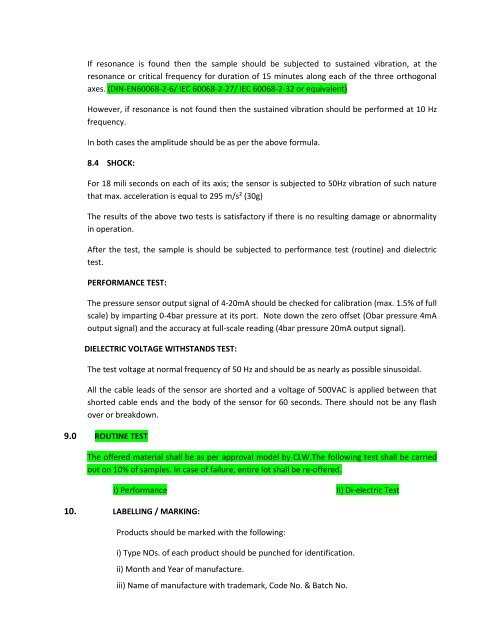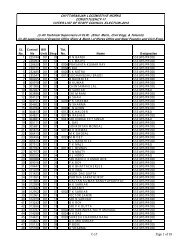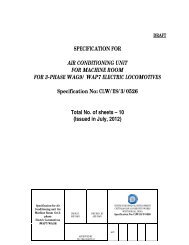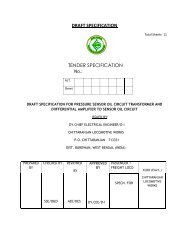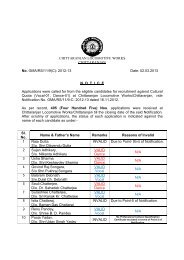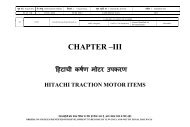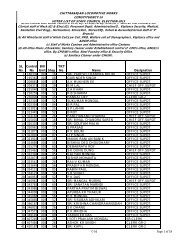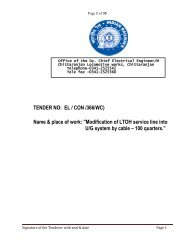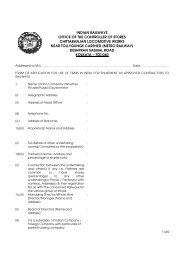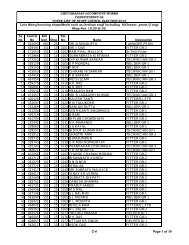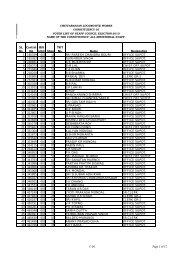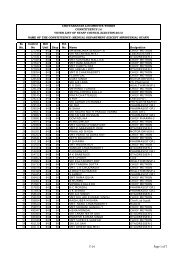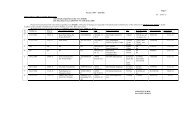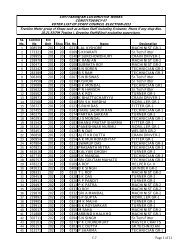REVISED SPECIFICATION TENDER SPECIFICATION No.:
REVISED SPECIFICATION TENDER SPECIFICATION No.:
REVISED SPECIFICATION TENDER SPECIFICATION No.:
Create successful ePaper yourself
Turn your PDF publications into a flip-book with our unique Google optimized e-Paper software.
If resonance is found then the sample should be subjected to sustained vibration, at the<br />
resonance or critical frequency for duration of 15 minutes along each of the three orthogonal<br />
axes. (DIN-EN60068-2-6/ IEC 60068-2-27/ IEC 60068-2-32 or equivalent)<br />
However, if resonance is not found then the sustained vibration should be performed at 10 Hz<br />
frequency.<br />
In both cases the amplitude should be as per the above formula.<br />
8.4 SHOCK:<br />
For 18 mili seconds on each of its axis; the sensor is subjected to 50Hz vibration of such nature<br />
that max. acceleration is equal to 295 m/s² (30g)<br />
The results of the above two tests is satisfactory if there is no resulting damage or abnormality<br />
in operation.<br />
After the test, the sample is should be subjected to performance test (routine) and dielectric<br />
test.<br />
PERFORMANCE TEST:<br />
The pressure sensor output signal of 4-20mA should be checked for calibration (max. 1.5% of full<br />
scale) by imparting 0-4bar pressure at its port. <strong>No</strong>te down the zero offset (Obar pressure 4mA<br />
output signal) and the accuracy at full-scale reading (4bar pressure 20mA output signal).<br />
DIELECTRIC VOLTAGE WITHSTANDS TEST:<br />
The test voltage at normal frequency of 50 Hz and should be as nearly as possible sinusoidal.<br />
All the cable leads of the sensor are shorted and a voltage of 500VAC is applied between that<br />
shorted cable ends and the body of the sensor for 60 seconds. There should not be any flash<br />
over or breakdown.<br />
9.0 ROUTINE TEST<br />
The offered material shall be as per approval model by CLW.The following test shall be carried<br />
out on 10% of samples. In case of failure, entire lot shall be re-offered.<br />
i) Performance II) Di-electric Test<br />
10. LABELLING / MARKING:<br />
Products should be marked with the following:<br />
i) Type NOs. of each product should be punched for identification.<br />
ii) Month and Year of manufacture.<br />
iii) Name of manufacture with trademark, Code <strong>No</strong>. & Batch <strong>No</strong>.


